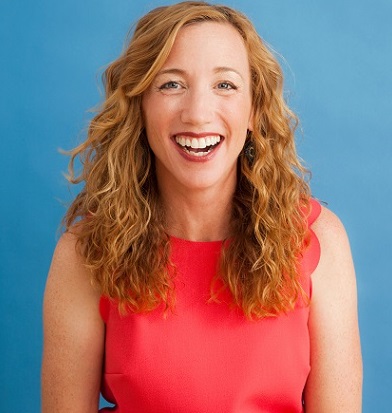
By Laurie McAndish King (@LaurieKing)/April 16, 2015
“Every time someone would ask me how I was doing, I would always give the same answer: I am so busy. Extremely busy. Crazy busy. I wore my exhaustion like a trophy, as a sign of my strength and a mark of my character.” Dr. Christine Carter
That was Dr. Christine Carter a few years ago. It probably sounds familiar–most of us would respond in a similar way. We are parents, partners, children, friends, employees, entrepreneurs, volunteers, committee heads, weekend warriors. And we’ve been programmed to believe that busier is better, that the busier a person is the more important, productive, and successful she is.
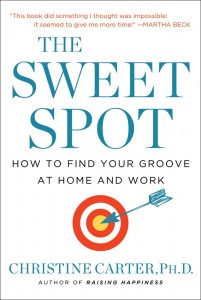 Christine Carter doesn’t believe that any more, and she’s out to convince the rest of us that busyness does not equal importance. In fact, that’s a major theme in her book, The Sweet Spot: How to Find Your Groove at Home and at Work. And it’s the first of three myths she busted in a talk at Dominican University’s Institute for Leadership Studies Lecture Series (in partnership with Book Passage).
Christine Carter doesn’t believe that any more, and she’s out to convince the rest of us that busyness does not equal importance. In fact, that’s a major theme in her book, The Sweet Spot: How to Find Your Groove at Home and at Work. And it’s the first of three myths she busted in a talk at Dominican University’s Institute for Leadership Studies Lecture Series (in partnership with Book Passage).
Carter looks happy and healthy as she stands onstage in a slim sheath and a peppy orange jacket. But she wasn’t always that way. Back when she was into busyness–when she had a high-powered job she loved as Executive Director of UC Berkeley’s Greater Good Science Center and had just released her first book, Raising Happiness, and was raising her four kids and training for a marathon–Carter got sick.
She had chronic low-grade strep throat for 18 months. She contracted a kidney infection. She even had a hospital fantasy: “I wish they would just admit me so I don’t have to go to Atlanta next week.” That’s the price of busyness. Carter emphasized her point by asking us to imagine that we had spent time at a pleasant lunch with a friend or tossing a ball with the dog.
When we’re involved in enjoyable activities like those, we don’t characterize ourselves as busy, even though our time is filled. When we feel busy, it’s usually because we’re doing things that we don’t really enjoy, or that don’t engage us, or that make us feel harried.
We call it “busyness,” but neuroscientists call it “cognitive overload”–a state in which it is difficult for a person to plan, decide, remember, think creatively, solve problems, and control emotions. Busyness is a sign that we are not functioning optimally, that we are not living up to our potential.
It is often a sign we are sacrificing our own needs for the needs of our children or our workplace. We need to dial it back in order to become our best selves, Carter explains.
What’s myth number 2? “More is better.”
We know that’s a myth, but it’s a hard one to resist. We tend to put our children into more activities, so they can get into more prestigious schools, so they can get better jobs, so they can make more money, so they can buy more stuff. Do we really want that kind of life for our children? Often, less is more. Often, we already have enough. Dial it back again.
Myth number 3? “Doing nothing is a waste of time.”
The truth is that our brains benefit tremendously from rest; when the mind wanders, the “creative insights” part of the brain turns on. Carter knows, because, as a sociologist she has studied productivity, elite performance, and well-being.
So where does that leave us? If we’re buying into those myths, we’re not living from our sweet spot–that place where we can feel ease as well as accomplishment. Carter shows us a slow-motion video of a baseball player hitting a ball perfectly–hitting the sweet spot. It’s a beautiful thing to watch. The bat doesn’t wobble. The ball flies high. The hitter has used “effortless power, not powerful effort.”
“The sweet spot is pretty fixed in athletics, but not for us humans,” Carter observes.
Fortunately, she has distilled cutting-edge scientific research into five strategies for finding the sweet spot in our own lives. “This book is me road testing all the research about elite productivity,” she says.
And here they are–Carter’s five sweet-spot strategies:
1. Single-task. The human brain is not designed to multitask, and when we try to do so it increases the chance of errors and creates a subtle, low-level fight-or-flight response. Christine tells us a story about her grandmother as an example. “My grandmother, who had a very difficult life, nevertheless lived to be 104. She loved to cook and taught me to cook. When we were cooking, if I asked a question she would put down the wooden spoon, turn, look at me, and answer my question. She was totally present.” That’s single-tasking.
2. Find the minimum effective dose of any given activity. “I had to do this in every area of my life.” Christine says. Her three-minute, do-it-every-day, better-than-nothing workout, for instance, consists of a one-minute plank, twenty push-ups, and twenty-five squats. And she looks terrific.
3. Stare into space. How will you feel? “Guilty, stuck, anxious, lazy. You’ll want to reach for your devices, read your email, check your Twitter feed. Stare into space anyway,” Carter advises. “Start small. Look at your anxiety or guilt with curiosity. Let yourself feel it. Device-checking is tremendously effective at numbing our emotions. But we don’t numb our emotions selectively. If you want to feel profound joy, you’ll also feel grief.”
Here Christine illustrates her point with short clip from the viral Louis C. K.’s “I Was in My Car One Time” video.
4. Lubricate your brain. Love, compassion, happiness, gratitude, awe, inspiration, hope, optimism–all these positive emotions have a physiological effect. They put the brakes on our fight-or-flight response, decrease stress, deepen our breathing, return our heart rate to normal, and even change our brain function. Carter shows us a short video of a child laughing, and we laugh, too. “You just did it!” she bubbles. “You just reset your nervous system!”
5. Change your mantra. When we have constant conversations about how busy we are, our brains go into overdrive. As an example of the importance of what we pay attention to, Christine shows us a video of Professor Daniel J. Simons’ “Monkey Business Illusion”:
We are what we pay attention to. Next time people ask how you are (“You must be so busy with your book launch…”) consider what you feel grateful for, Carter suggests. You could answer with something like, “I’m very focused on my book launch and I particularly love doing radio interviews.” Then you could change the subject to, “And I’m happy that it’s been so sunny.”
These strategies are hardly a spoiler for Carter’s book, which is jam packed with research-based advice on generating love and connection, shaking things up, problem-solving, fighting the right way, learning to apologize, letting go of grudges, tolerating discomfort, learning from difficulty, the importance of recess, and lots more.
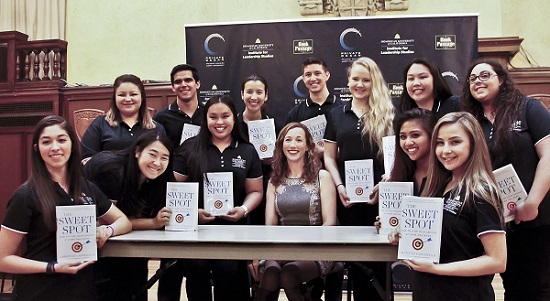
I love Carter’s message, but wonder whether she’s speaking to the choir, here in Northern California. We may not be aware of all the latest research, but we’ve certainly heard the takeaway. We know it’s important to slow down, to avoid multi-tasking, and to unplug when we’re not working.
As Carter closes her talk, I look around. The air is soft. Many people in the audience are hurrying out into the warm evening. More than half are checking their mobile devices–more than half!–before they even reach the auditorium door. We need you, Dr. Christine Carter. We are crazy busy, and we need you.
Listen to TWE Radio on iTunes to hear Christine Carter interviewed by Stacey Gualandi.
###
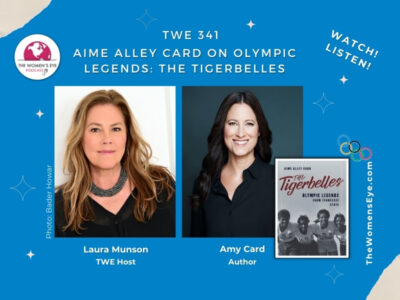
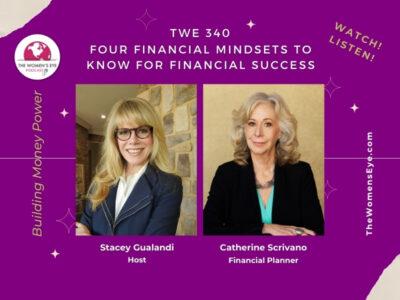
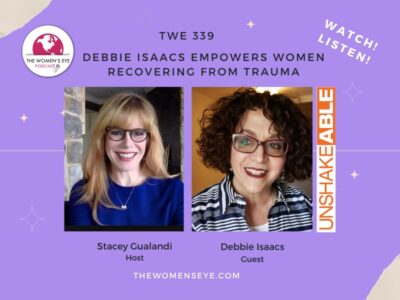
Leave a Reply